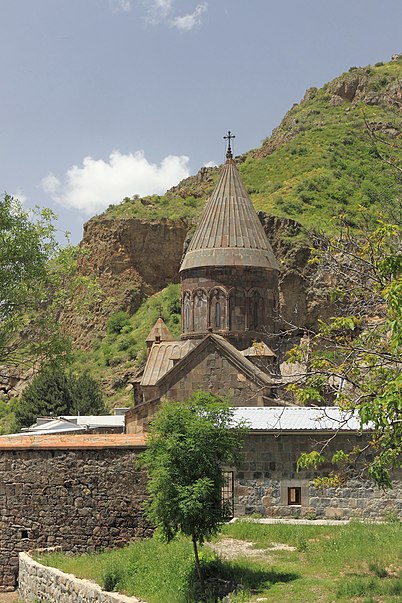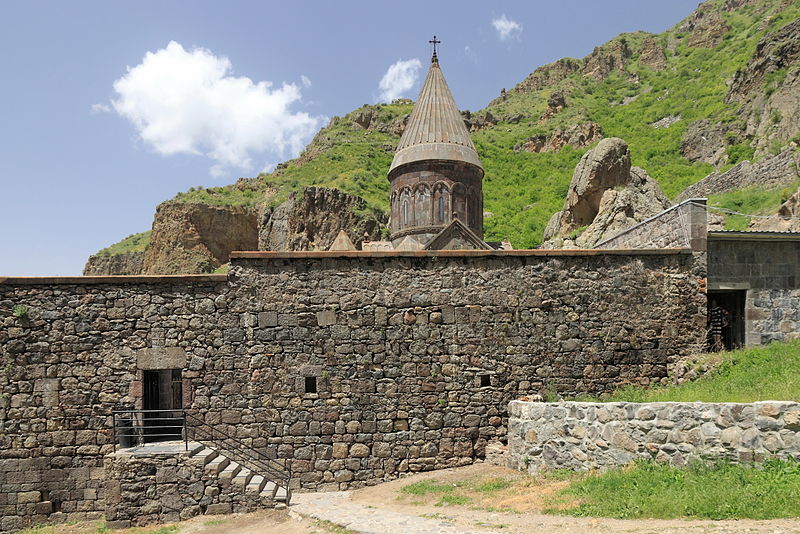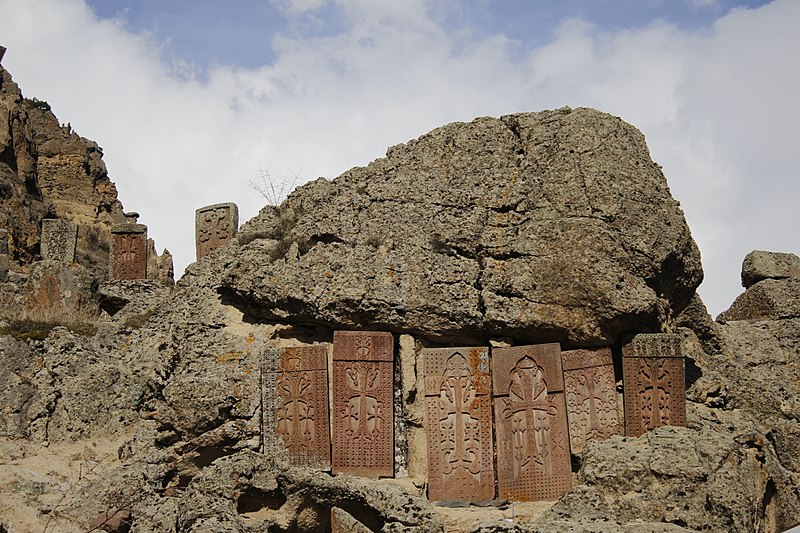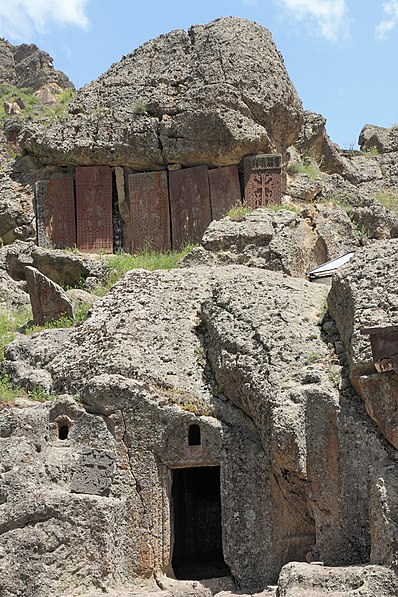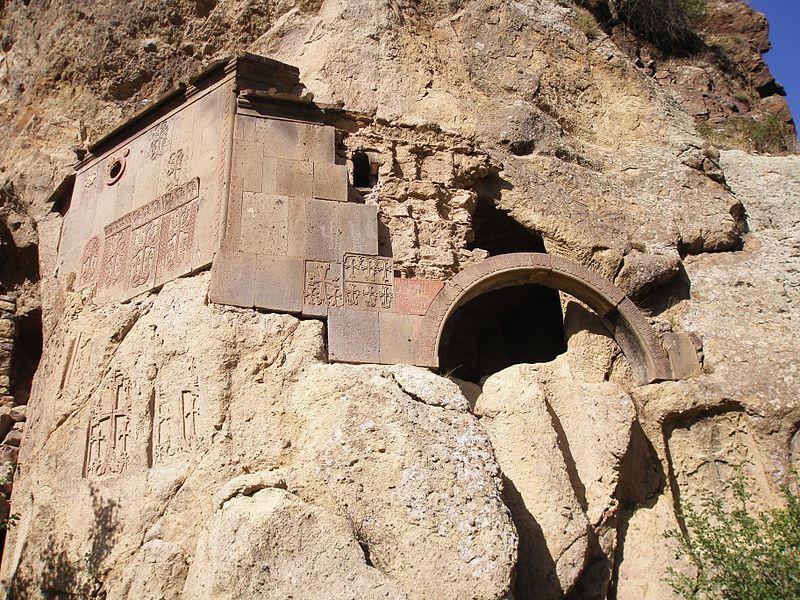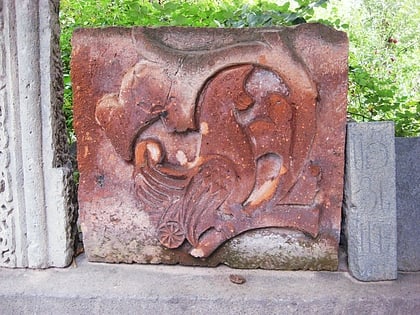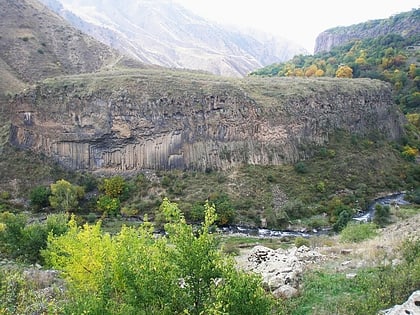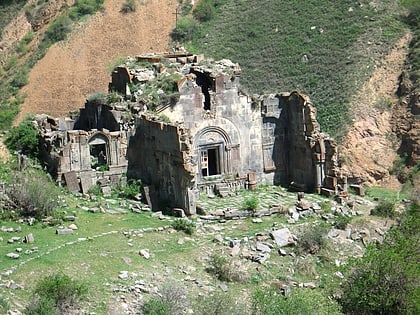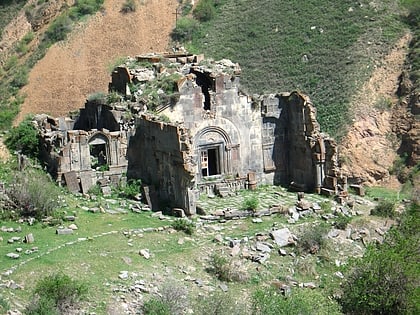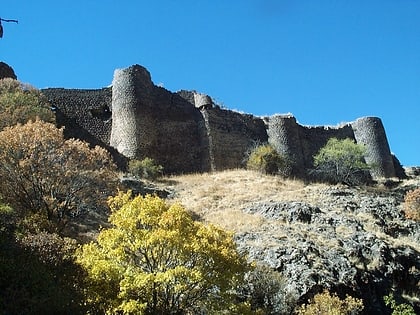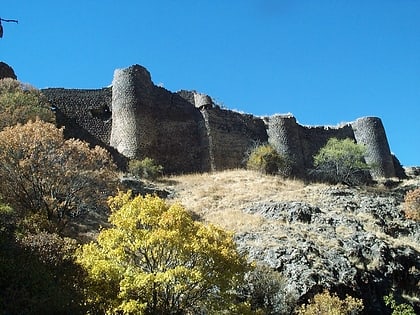Geghard, Geghard
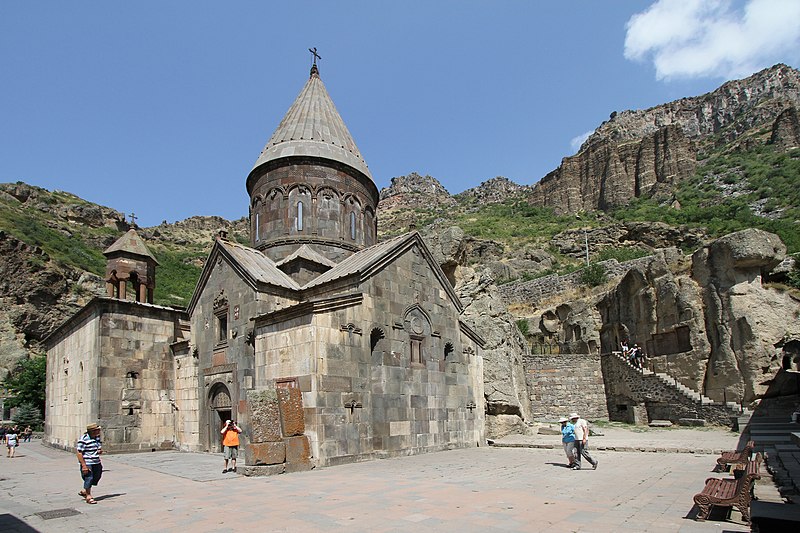
Facts and practical information
Nestled within the rugged landscape of Armenia, the Geghard Monastery is a remarkable historical and architectural wonder that captivates visitors from around the world. This UNESCO World Heritage site, carved out of the adjacent mountain and surrounded by towering cliffs, is located in the city of Geghard, approximately 40 kilometers southeast of the Armenian capital, Yerevan.
The monastery complex dates back to the 4th century and is renowned for its intricate rock-carved churches and chapels. Its full name, Geghardavank, translates to "the Monastery of the Spear," a reference to the lance that is said to have wounded Jesus during the Crucifixion; this holy relic was allegedly brought to Armenia and housed in the monastery.
Visitors to Geghard are immediately struck by the harmony of the construction with the natural environment. The complex showcases a blend of medieval Armenian architecture with the rugged beauty of the Azat River gorge. The monastery's main chapel was built in 1215, and the complex was further expanded over the subsequent centuries, with many of the chapels cut directly into the rock face.
Tourists can explore several cave churches, intricate khachkars (cross-stones), and tombs that are part of the monastery's layout. The acoustics within the rock-hewn chambers are exceptional and often serve as a hauntingly beautiful venue for liturgical singing.
When planning a visit to Geghard, it's advisable to allocate at least a couple of hours to fully appreciate the site's remarkable features and peaceful ambiance. Comfortable walking shoes are recommended as the terrain can be uneven, and visitors should be prepared for a moderate amount of walking. Photography is allowed, but discretion should be exercised during any ongoing religious services.
Geghard – popular in the area (distance from the attraction)
Nearby attractions include: Garni Temple, Havuts Tar, Mashtots Hayrapet Church of Garni, Garni Gorge.


